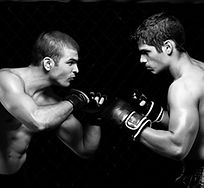First-Hand Physical Therapy
- Shahir A

- Jan 22, 2016
- 3 min read

Date:
1/22/16
Analysis:
Reading articles online and writing assessments about them is one thing, but being able to observe the things I’ve learned about so far first-hand was essential in connecting the gaps I had in my knowledge of Sports Medicine. I had the opportunity to shadow my mentor in her office, where she ran me through what a routine therapy session would be like with an actual patient.
The first part of the session was the introduction and the diagnosis. Mrs. Murray, the head physical therapist at OrthoTexas and my mentor, was extremely friendly and polite when talking with the patient. This particular patient was doing rehabilitation for a broken knee, and to start off the process, Mrs. Murray asked him a plethora of questions about the causes of the injury, the symptoms, the surgery, and in all gathered all the information she could before proceeding with the exercises. This type of proper, complete diagnosis is the most important part to ensuring beneficial treatment because it makes sure to take into account the goals of the patient and what he or she is comfortable doing. Mrs. Murray was handled everything extremely well, and transitioned smoothly to the next step of the session: exercising.
After undergoing surgery, rehabilitation and physical therapy can be seen by many patients as a waste of time and money. However, my mentor made sure to properly explain the purpose of the time spent during the session, and clarified with the patient the benefit of the exercises and stretches she was doing. To start off, Mrs. Murray massaged the affected area of the surgery where scar tissue and stiffness was present. Then, she proceeded to run the patient through a number of different exercises, making sure that the patient could rest between exercises and was comfortable with each exercise. Throughout this whole process, Mrs. Murray engaged the patient in conversation and made sure to listen to what he had to say. I now understand that establishing this sort of connection between patient and therapist is crucial because a) it makes the patient more likely to properly do the exercise b) it takes the patient’s mind off any pain or discomfort and c) it establishes a trust factor that in all makes the treatment more efficient.
Apart from all of the rehabilitation and therapy itself, I would say that what I learned most about was proper etiquette when engaging with a patient. By firstly setting goals for the patient, Mrs. Murray ensured that the patient would strive to reach that goal and leave much better off than when he first started. I was also able to meet the staff at OrthoTexas, some of whom were only a few years older than me and finishing off college. I was able to talk to these guys about what degrees to take, which schools were better than others, and what not to do in the first years of college. Their mannerisms and overall attitudes complemented the upbeat nature of the environment as a whole. Apart from the staff and professionals, to see the actual implementation of things I researched earlier such as the RICE method was amazing. Mrs. Murray was able to explain to me exactly why to compress and elevate the injury, and seeing it in person was definitely different than reading about it online I have quite a ways to go, but I hope that by spending more time with these professionals and being in these environments will help me solidify my knowledge.
























Comments